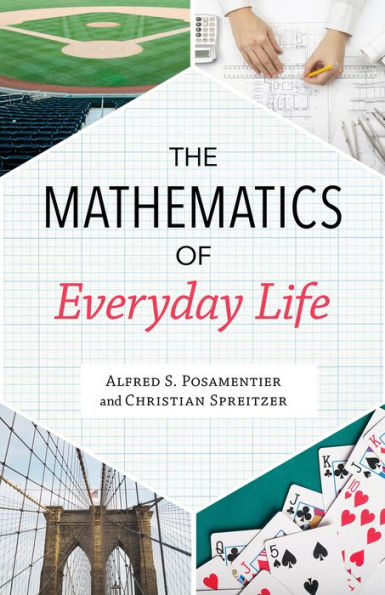Two experienced math educators help the average reader discover not only the everyday usefulness of math but the fun that comes from mastering the basics of arithmetic, algebra, geometry, and more. If you think of mathematics as a series of pointless classroom exercises without much relevance to real life, this book will change your mind. As the authors show, math is deeply embedded in almost every aspect of daily life--from managing your personal finances, making consumer purchases, and sharpening your computational skills, to learning to apply mathematical concepts that will give you a better grasp of both ordinary and extraordinary events and help you better appreciate the world we live in. With some basic geometry under your belt, you'll discover that there is an optimal point on a soccer field from which to shoot a goal. And you'll be more clever with the gears of a bike. If you like to play cards or go to the casino, knowing something about probability will give you an edge. You'll also have an enhanced understanding of the "whispering effect" inside the Capitol rotunda, why a car's headlights are so bright, and even why sewer covers are round. After reading this entertaining and instructive book, you'll come away with a whole new awareness of how elegantly mathematics explains everyday experiences and observations--from present day items to classical art and architecture.
"1127541274"
The Mathematics of Everyday Life
Two experienced math educators help the average reader discover not only the everyday usefulness of math but the fun that comes from mastering the basics of arithmetic, algebra, geometry, and more. If you think of mathematics as a series of pointless classroom exercises without much relevance to real life, this book will change your mind. As the authors show, math is deeply embedded in almost every aspect of daily life--from managing your personal finances, making consumer purchases, and sharpening your computational skills, to learning to apply mathematical concepts that will give you a better grasp of both ordinary and extraordinary events and help you better appreciate the world we live in. With some basic geometry under your belt, you'll discover that there is an optimal point on a soccer field from which to shoot a goal. And you'll be more clever with the gears of a bike. If you like to play cards or go to the casino, knowing something about probability will give you an edge. You'll also have an enhanced understanding of the "whispering effect" inside the Capitol rotunda, why a car's headlights are so bright, and even why sewer covers are round. After reading this entertaining and instructive book, you'll come away with a whole new awareness of how elegantly mathematics explains everyday experiences and observations--from present day items to classical art and architecture.
17.99
In Stock
5
1

The Mathematics of Everyday Life
424
The Mathematics of Everyday Life
424eBook
$17.99
$23.50
Save 23%
Current price is $17.99, Original price is $23.5. You Save 23%.
Related collections and offers
17.99
In Stock

Product Details
| ISBN-13: | 9781633883888 |
|---|---|
| Publisher: | Rowman & Littlefield Publishers, Inc. |
| Publication date: | 08/21/2018 |
| Sold by: | Barnes & Noble |
| Format: | eBook |
| Pages: | 424 |
| File size: | 13 MB |
| Note: | This product may take a few minutes to download. |
About the Author
From the B&N Reads Blog
